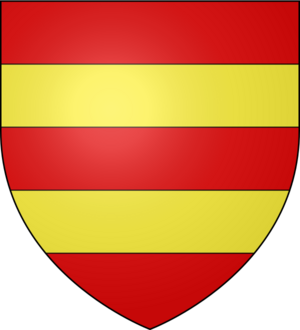John Cameron of Lochiel facts for kids
John Cameron, Lord Lochiel (1663–1747) was a Scottish leader who supported the Jacobite cause. This meant he wanted the old royal family, the Stuarts, to be kings of Scotland and England again. He was also the 18th Chief of Clan Cameron, a powerful Scottish clan.
John Cameron spent most of his life living away from Scotland, in France. This is called being in exile. Because of this, his son, Donald Cameron of Lochiel, became the main leader of the clan. Donald was often called the Gentle Lochiel.
John Cameron's Early Life
John Cameron was the oldest son of Sir Ewen Cameron of Lochiel. His mother was Isobel Maclean. John's father, Sir Ewen, was famous for supporting King Charles II. He even fought for the King in the 1652 Rising. For his loyalty, Sir Ewen was made a knight in 1681.
John Cameron followed in his father's footsteps. He fought alongside his father at the Battle of Killiecrankie in 1689. This battle was part of the early efforts to bring the Stuarts back to the throne.
Joining the Jacobite Risings
As the acting chief of Clan Cameron, John joined the forces of the Earl of Mar in the 1715 Jacobite Rising. This was a major attempt to put the Stuart king, often called "James III", back on the throne.
At the Battle of Sheriffmuir, John Cameron led the Camerons. However, his leadership was not successful, and the clan's forces were defeated. Because of his role in the uprising, he was declared a traitor and had to leave Scotland. He went into permanent exile.
Even though he was in exile, "James III" still recognized his loyalty. On January 27, 1717, James made John Cameron a Lord of Parliament in the Jacobite peerage. This was a special title given by the exiled Stuart court.
Life in Exile
John Cameron fought again in the 1719 Rising at Glenshiel. After this defeat, he returned to France for good. He became known as "Old Lochiel" during this time.
King James gave him a good pension, which meant he had money to live on. John lived a fancy life in Paris for a while. Later, he moved to a cheaper home in Boulogne. He lived there with his cousin, Sir Hector Maclean, who was also a clan chief in exile.
Old Lochiel passed away in 1747 in Nieuport, which was then part of French Flanders. It is not clear if he took part in the Jacobite rising of 1745. He would have been around 80 years old at that time, so it is unlikely.
John Cameron's Family
John Cameron married Isobel Campbell. They had several children. His oldest son and the next chief was Donald Cameron of Lochiel (1695–1748). Donald played a very important part in the Jacobite rising of 1745.
John's other sons also had interesting lives:
- John Cameron, Laird of Fassiefern (1698–1785)
- Alexander Cameron (1701–1746), who became a Catholic priest and worked for the Jacobite court.
- Archibald Cameron (1707–1753), who was the personal doctor to Prince Charles Edward Stuart (Bonnie Prince Charlie). Archibald was the last Jacobite to face serious consequences for treason in 1753.


